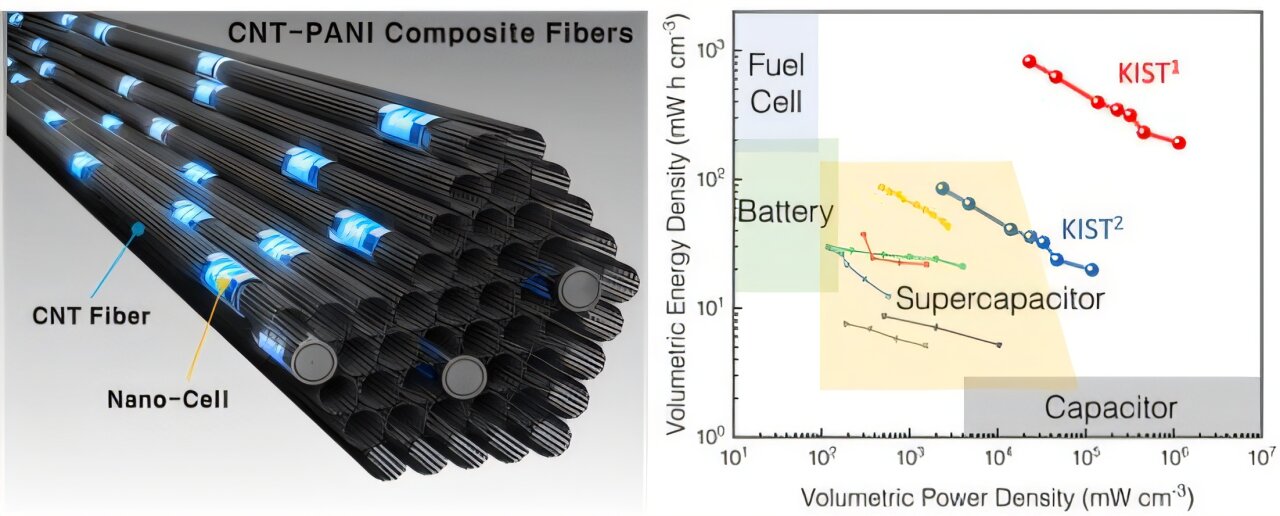
New progress in the field of energy storage. A team of researchers in South Korea has developed an advanced supercapacitor that delivers not only high power density but also a record-breaking energy density of 418 Wh/kg. Even more impressively, it maintains stable performance after more than 100,000 charge-discharge cycles. The secret lies in the material design.
Fiber-based supercapacitors
Supercapacitors are a class of energy storage devices made by combining a conductive material – often acting as a current collector – with an electrochemically active material.
Their strengths? High power density, rapid charge and discharge capabilities, and long life cycles. These features make them superior to batteries in certain scenarios, particularly in applications that require high instantaneous power and ultra-fast charging. However, they have traditionally lagged behind in energy density – the amount of energy they can store per unit of weight or volume.
Read also: Solar supercapacitors and their performance
A research team from the Korea Institute of Science and Technology (KIST) and Seoul National University (SNU) tackled this challenge by leveraging the high conductivity of carbon nanotubes.
Specifically, the team developed composite fibers made from single-walled carbon nanotubes and polyaniline (PANI), a low-cost conductive polymer. PANI acts as the active material, and the team successfully dispersed it uniformly at the nanoscale across the fiber, anchoring it onto the nanotubes. This nanoscale integration is crucial for achieving high capacity and durability in the device – something that has been difficult with other active materials due to the chemical inertia and hydrophobic nature of carbon nanotubes.
The result is a sophisticated fiber structure that simultaneously enhances electron and ion transport, forming the backbone of this advanced supercapacitor.
Performance metrics of the advanced supercapacitor
Laboratory tests revealed that the composite fiber achieves a specific capacitance of 1714 F/g, an energy density of 820 mWh/cm³ and 418 Wh/kg, and a power density of 1150 W/cm³. The device also demonstrated outstanding stability, retaining nearly 100% of its original capacity after 100,000 charge/discharge cycles and withstanding over 10,000 mechanical deformations.
“This technology overcomes the limitations of conventional supercapacitors by using single-walled carbon nanotubes and conductive polymers,” said Dr. Bon-Cheol Ku from KIST. “We will continue to develop and commercialize ultra-performance carbon fibers based on nanotubes.”
The study, titled “Nanocell-structured carbon nanotube composite fibers for ultrahigh energy and power density supercapacitors,” was published in Composites Part B: Engineering.